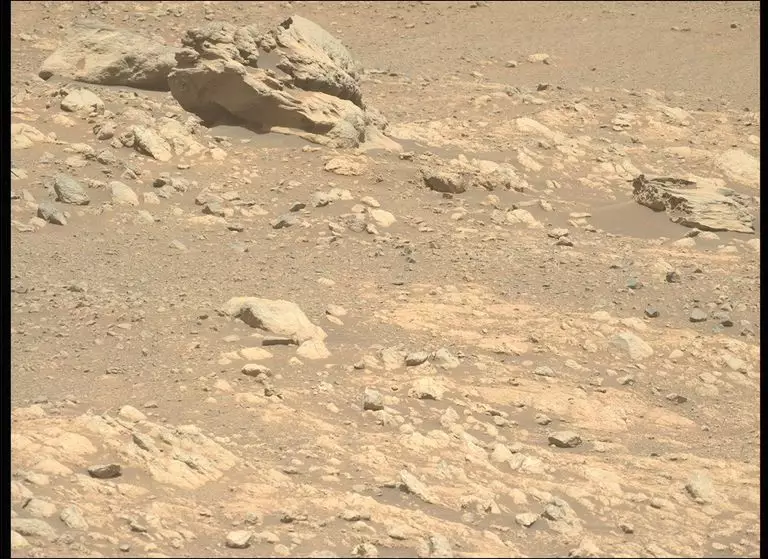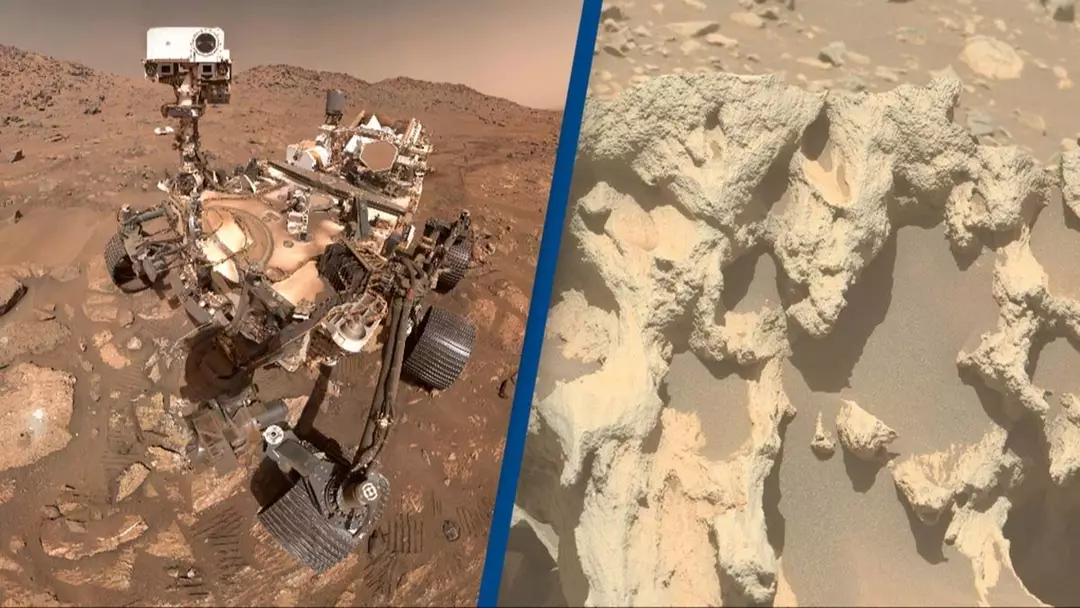NASA’s Mars rover, Perseverance, recently made a remarkable discovery that has left scientists puzzled.
The rover identified a boulder near the rim of the Jezero crater in the Vernodden area, which stands out due to its unusual characteristics.
This boulder, approximately 80 centimeters across, has been named ‘Phippsaksla’ by NASA researchers.
The intrigue surrounding this rock is due to its sculpted appearance and its prominent position compared to the typically low-lying, flat, and fragmented rocks in the area.
To delve deeper into the mystery, Perseverance employed its SuperCam instrument to analyze the rock, and the findings were surprising.
It turns out that this rock likely did not originate on Mars.

The rock’s composition, high in iron and nickel, is commonly associated with iron-nickel meteorites, which form in the cores of large asteroids.
Dr. Candice Bedford, a geologist from Purdue University and an operator of the Perseverance rover, noted in NASA’s blog: “This element combination is usually associated with iron-nickel meteorites formed in the core of large asteroids, suggesting that this rock formed elsewhere in the solar system.”
Thus, this rock may have landed on Mars and become part of its dusty landscape.
Perseverance has been exploring the Jezero crater for four years, as scientists hypothesize that it may have once been filled with water, potentially supporting life.

While Mars is frequently bombarded by meteors, the composition of this rock is particularly unusual.
Professor Gareth Collins, an authority on meteor impacts from Imperial College London, stated to the Daily Mail: “At some point in time, the entire Martian surface has been shaped by impacts.
“Meteors are expected on Mars on a daily basis; we don’t know the number precisely, but there should be lots each day.”
Dr. Bedford shared: “As such, it has been somewhat unexpected that Perseverance had not seen iron-nickel meteorites within Jezero crater, particularly given its similar age to Gale crater and number of smaller impact craters suggesting that meteorites did fall on the crater floor, delta, and crater rim throughout time.”
In other developments, 3I/ATLAS, a ‘comet’ with dimensions comparable to Manhattan, has garnered attention due to its peculiar features, leading to speculation about its origins as an alien spacecraft.
This massive rock passed near the Sun, and unlike typical comets, it remained intact despite the intense heat.
As speculation about its potential as an alien mothership continues, it’s a phenomenon worth monitoring closely.

